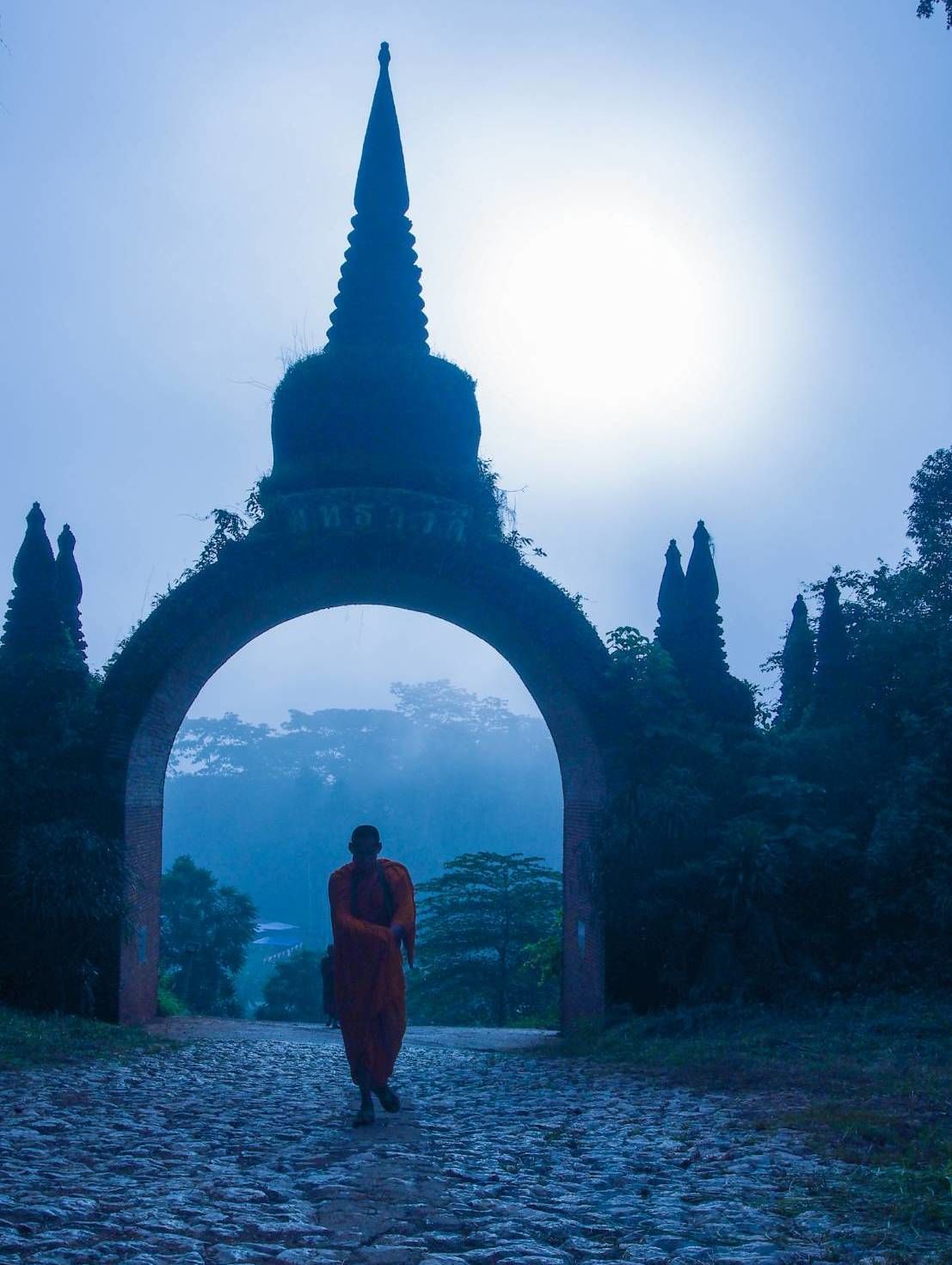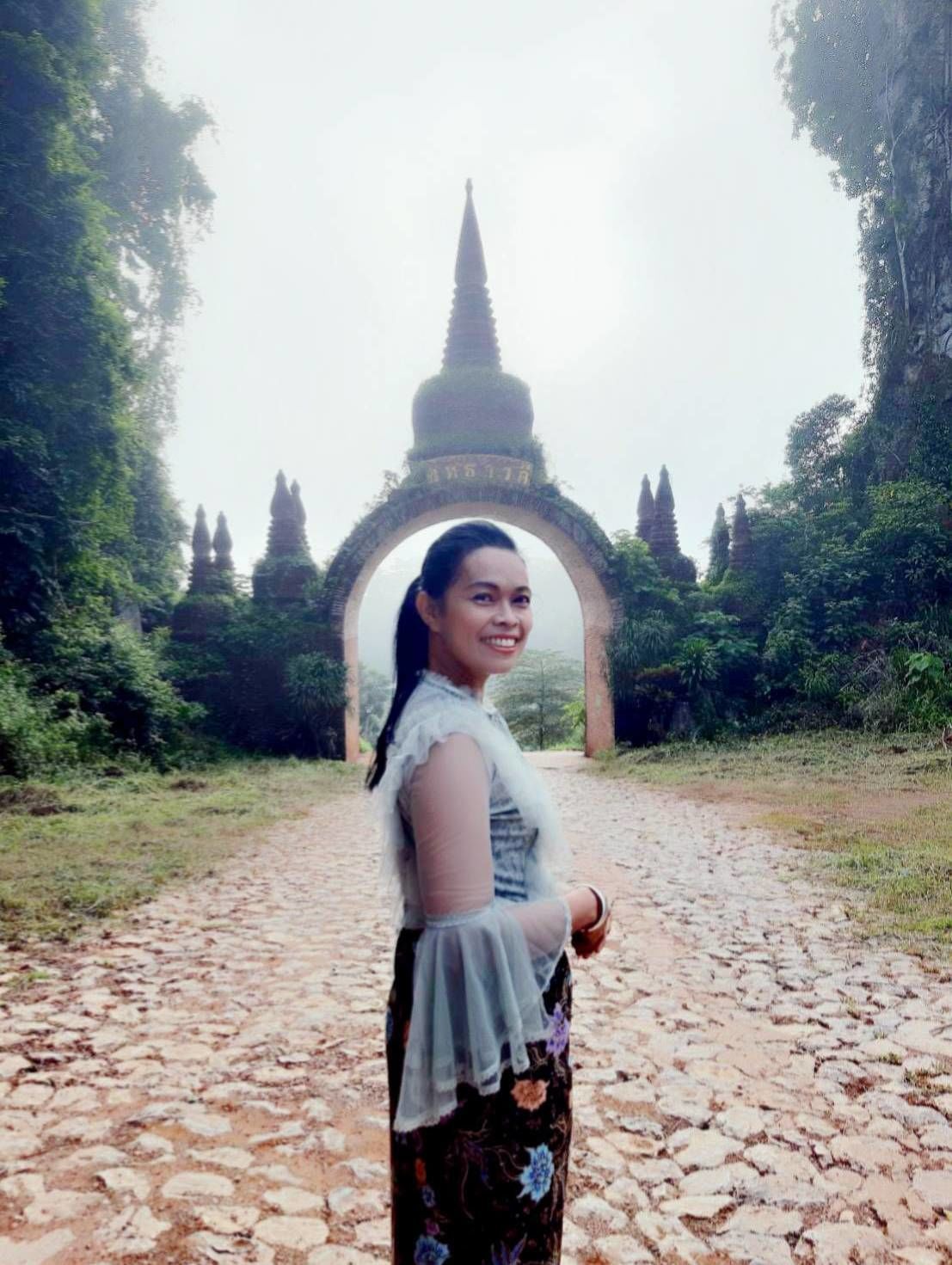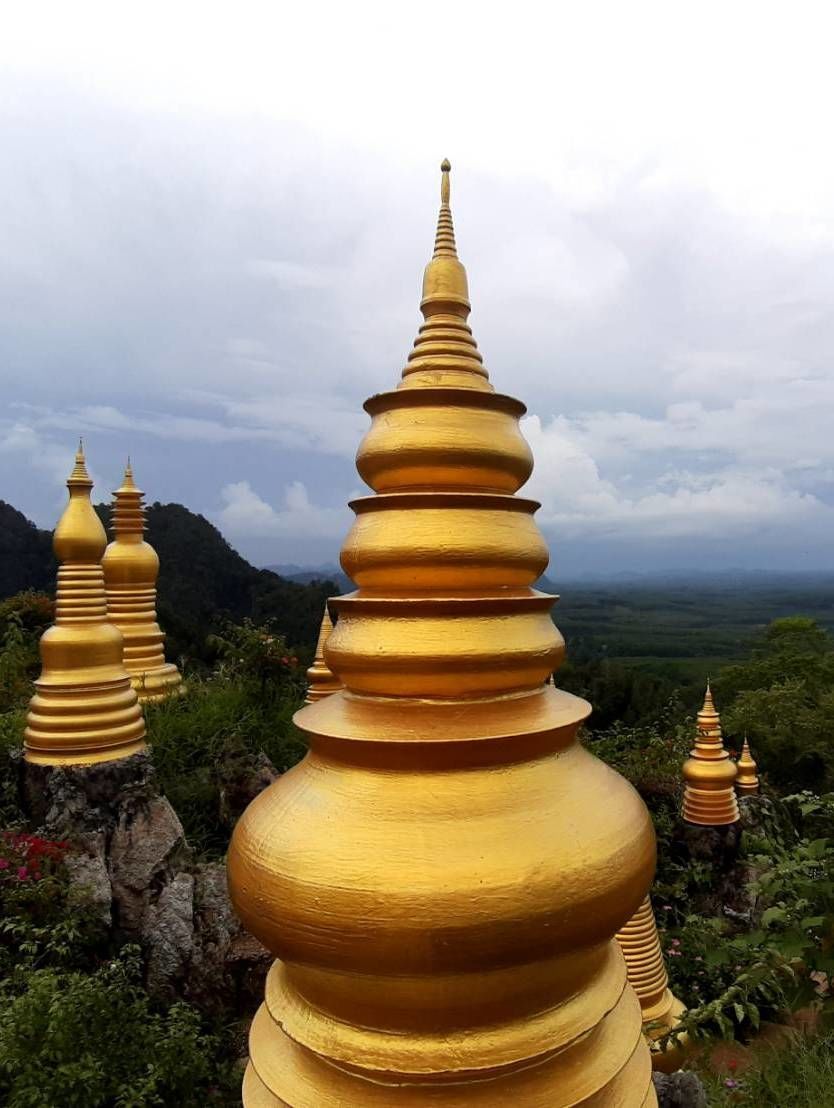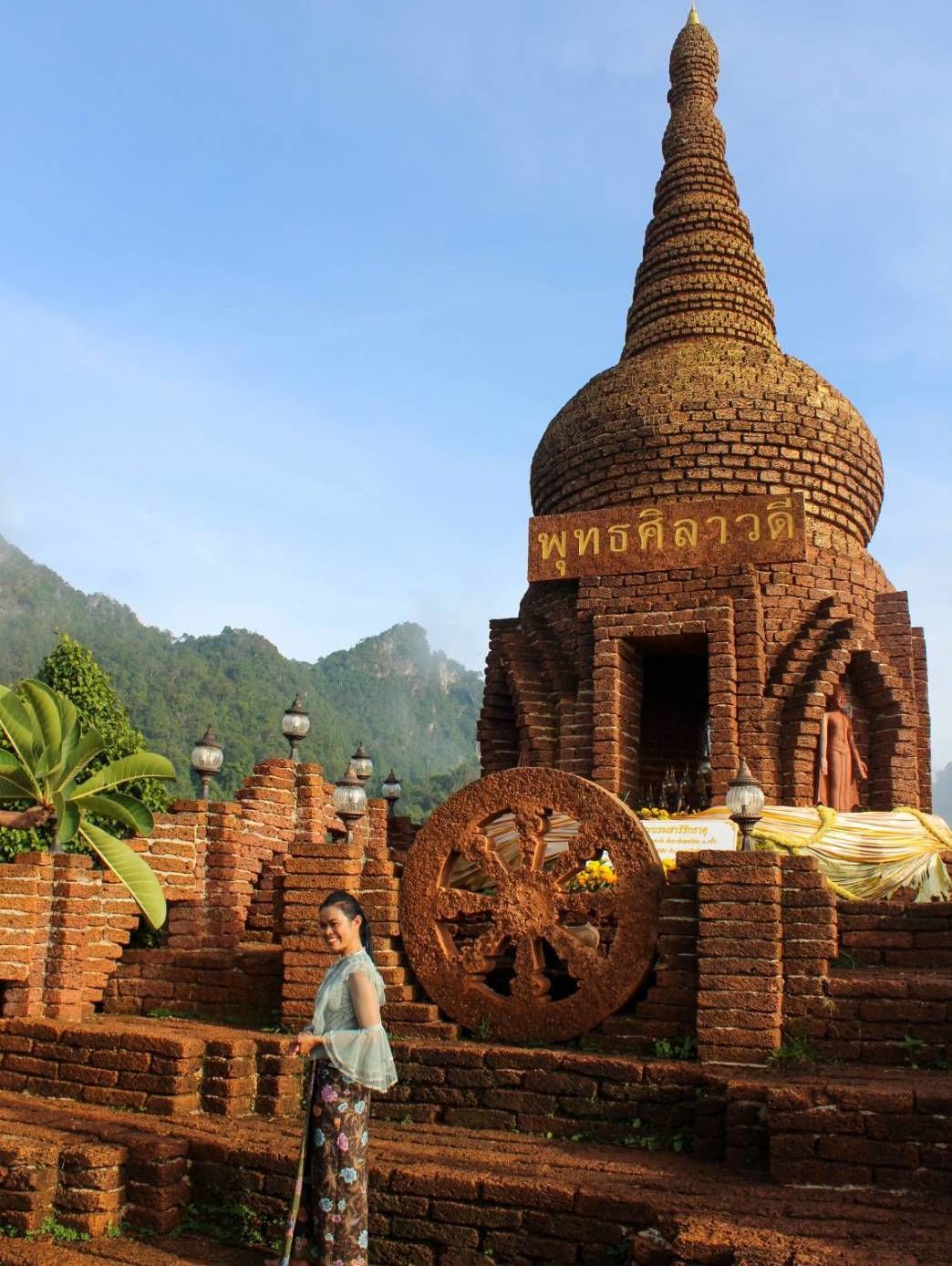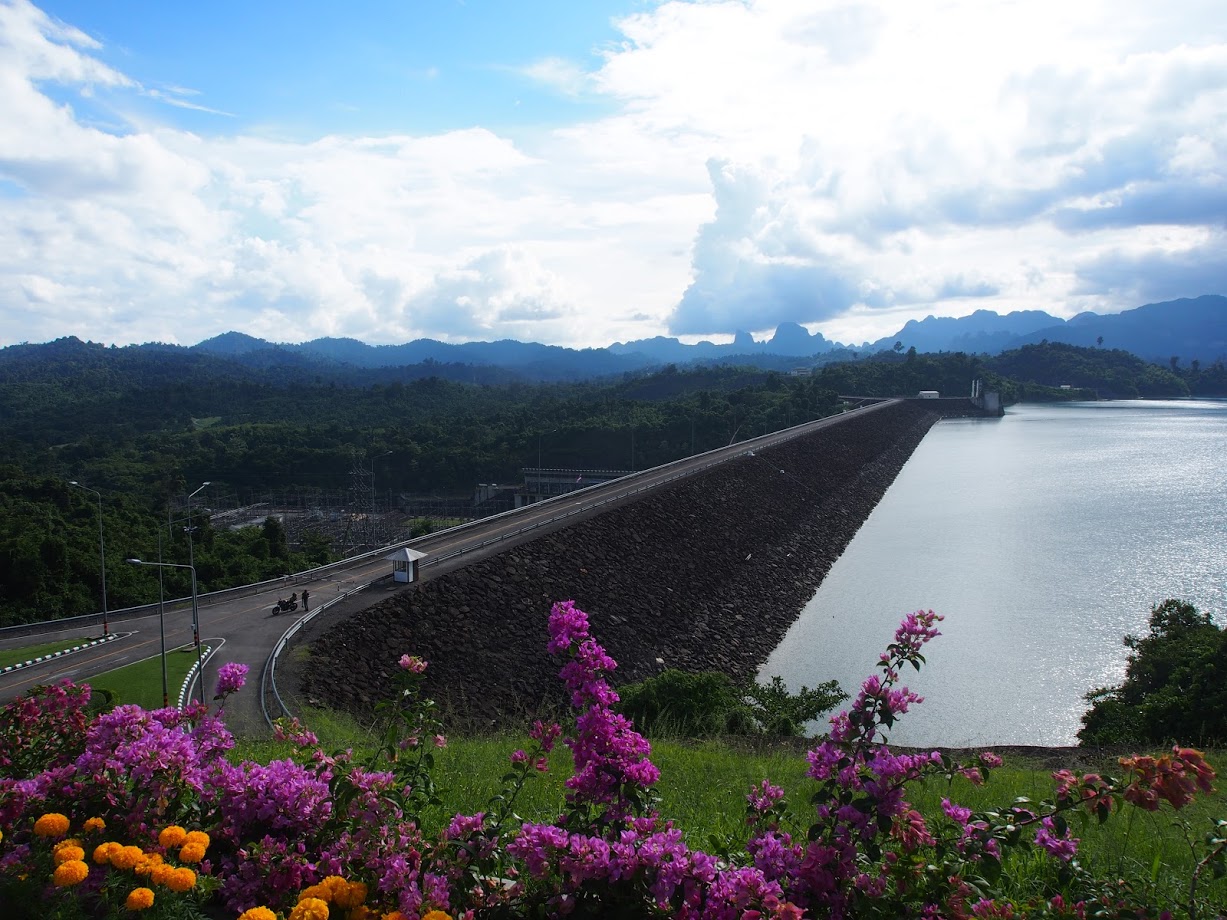Surat Thani
Surat Thani Province, The area of Surat Thani was already inhabited in prehistoric times by Semang and Malayan tribes. Founded in the 3rd century, the Srivijaya kingdom dominated the Malay Peninsula until the 13th century. The city of Chaiya contains ruins from the Srivijaya period, and it was probably a regional capital of the kingdom. Some Thai historians even argue that it was the kingdom's capital for a time, but this is disputed. Wiang Sa was another important settlement of the time. After the fall of the Srivijaya, the area was divided into the cities (mueang) of Chaiya, Thatong (now Kanchanadit), and Khirirat Nikhom. Chaiya was administered directly from the Thai capital, while Thatong and Khirirat were controlled by the Nakhon Si Thammarat Kingdom. In 1899, they were all merged into a single province called Chaiya. In 1915, the court of the Monthon Chumphon was transferred to Bandon, which received the new name of Surat Thani on 29 July 1915, during a visit of King Vajiravudh (Rama VI). This was likely influenced by the major port city of Surat in Gujarat, India. The monthon was also renamed Surat. In 1926 it was abolished and incorporated into monthon Nakhon Si Thammarat. The monthon was dissolved in 1933, and the province became a first level administrative subdivision.The provincial administration was in a building in Tha Kham (Phunphin District). Shortly before World War II, it was moved to the city of Surat Thani, on the banks of the Tapi River, which is named after the Tapi River in southern Gujarat, India. When the Japanese invaded Thailand on 8 December 1941, the administrative building was destroyed during the battle for the city. It was finally rebuilt in 1954, but on 19 March 1982, a bomb planted by communist rebels blew up the building, killing five people. The third and present building was relocated to the south of the city, and the former site of the provincial hall is now the site of the city pillar shrine (Lak Mueang).
Culture
The two most important Buddhist monasteries of the province are in Chaiya District. Wat Phra Boromathat Chaiya boasts a chedi in Srivijaya-style, dating from the 7th century and carefully restored. Buddhist relics are enshrined in the chedi, and the surrounding chapels contain Buddha figures in Srivijayan style. The Chaiya National Museum adjoins the temple. Nearby is Wat Suan Mokkhaphalaram, a forest monastery founded by the famous monk Buddhadasa Bhikkhu.
Festivals
- Chak Phra Festival – Celebrates the return of Buddha from heaven to earth and to be greeted by multitudes. Celebration takes place every year immediately after the end of 3 month rain retreat, about October. It is celebrated in many parts of southern Thailand, but especially in Surat Thani. The evening prior to Chak Phra Day, billboards are erected showing Buddha's story around the city and celebrations continue day and night. On land, the splendidly adorned floats are pulled across the town by the participants. At the same time, on water a float decorated with colourful Thai designs carries the Buddha image. Chak Phra festivities conclude with a boat race and traditional games.
- Rambutan and Thai Fruit Festival – Rambutan trees were first planted in Surat Thani at Ban Na San in 1926 by Mr. K. Vong, a Chinese Malay. The annual Rambutan Festival is held during the August harvest.
- Boon Sad Dean Sib Festival (Southern Traditional) – Held on the full moon of the 10th month in traditional calendar (about August). People go to the temple in remembrance of ancestors.
- Surat Thani Songkran Festival – Thai New Year water festival is celebrated every year on 13 April.
- Surat Thani Loy Krathong Festival on the Tapi River – Held on the full moon of the 12th month in the traditional Thai lunar calendar. In the Western calendar this usually falls in November. During the evening of the full moon, people launch symbolic floating "krathong" on the river.
- Bull Fighting – This ancient popular sport on Ko Samui was once held in fields or on farms. Now, permanent stadiums in various districts take turns hosting the monthly bull fights.
Economy
The main agricultural products of the province are coconut and rambutan. The coconuts are often picked from the tree by specially trained monkeys, mostly pig-tailed macaques (Macaca nemestrina). The monkey school of the late Somporn Saekhow is the most known training centre. Rambutan trees were first planted in Surat Thani in 1926 by the Chinese Malay Mr. K. Vong in Ban Na San District. An annual rambutan fair is held in earlyAugust and includes a parade of highly decorated floats on the Tapi River. Rubber tree plantations are also common in the province. A notable local product is the hand-woven silk cloth from the coastal village Phum Riang in Chaiya District. Chaiya is also the most famous source of red eggs, a local specialty. Ducks are fed with crabs and fish and the eggs are then preserved by placing them in a soilsalt mixture. Tourism is the major source of income of the four islands Ko Samui, Ko Pha Ngan, Ko Tao, and Ko Ang Thong and Khaosok National park.
The highligh place, recommend to visit!
Khao Na Nai Luang Dharma Park
Khao Na Nai Luang Dharma Park located in Ton-Yuan Subdistric, Pha-Nom District, Surat Thani Province was founded by Phra Ajarn Prai. Phra Ajarn Prai and villagers helped to build a pagoda on the top of the limestone found around the area. Overlooking palm and rubber plantations on limestone mountains, this temple started its construction in 1997 to commemorate the ancient-Srivijaya roots that laid the foundation for the Surat Thani region. As maritime trade and commerce in that era helped spread Buddhism throughout Asia, stupa were originally built to safeguard Buddhist remains and relics. The main arch and stupa glisten in the morning sun and is one of the best views in southern Thailand. During the cooler months, you can see the morning fog roll over the nearby farms. Visitors can hike to the various stupas nearby and finish with a rustic lunch at one of the local eateries in the area.
when this place was in 1997, in the past time, it was the community forest first. It was the location of the priest house and the place for practicing the dharma, training the Vipassana meditation of the person who had admired in believed in Buddhism. There were sky-high stupas, Silavadee Buddha that had contained Buddha’s relics, Phra jedi Phutnakornklanghao within Khao Na Nai Luang Dharma Park. And the prominent point that shouldn’t be missed, this was 9 peaks ancient arch stupa that was called, “Phutthawadee arch”, when the sunlight has passed to the arch door. It will create the beautiful and impressed picture very much. Besides, there is the accommodation for the person who will come to practice the dharma. And this place has arches for female traders to sell things according to other festivals for rendering the service for everyone.
Khao Na Nai Luang Dharma Park
Phutthawadee arch
Phutthawadee arch
Phra Chedi Phutnakornklanghao
Silavadee Buddha
Location Ban Ta Khun District, Surat Thani Province
Dam Features
| Type | Rockfill dam with clay core |
| Height | 94 meters |
| Crest length | 761 meters |
| Reservoir’s area | 185 square kilometers |
| Reservoir's storage capacity | 5,639 million cubic meters |
Generating Capacity
The power plant houses three 80 MW generators, totaling 240 MW of generating capacity.
Background
To commemorate the 5th cycle Birthday Anniversary of His Majesty King Bhumibol Adulyadej, the project on the construction of Chiew Lan for the purpose of irrigation and power generation was incorporated in the 4th National Economic and Social Development Plan (1977-1981).
The construction of Chiew Lan Dam commenced on February 9, 1982 and was completed in September 1987. His Majesty King Bhumibol Adulyadej graciously gave the name “Rajjaprabha” meaning “the Light of the Kingdom” to the dam. The dam and the hydropower plant were inaugurated by His Majesty King Bhumibol Adulyadej accompanied by Her Royal Highness Princess Maha Chakri Sirindhorn on September 30, 1987.
Facilities
Accommodation
There are many types of floating rafting resort on the Chiewlan lake, some of them belong to the National park office and some of them belong to the private organization, and there are resort on the dam and nearby
Restaurant
Guilin Restaurant has beautiful scenery with the sea of mist in the morning and wonderful sunset in the afternoon.
Golf Course
We offer the visitors with standard golf course of 18 holes. Also, there is a restaurant near the golf course offered for golf players for their most convenience.
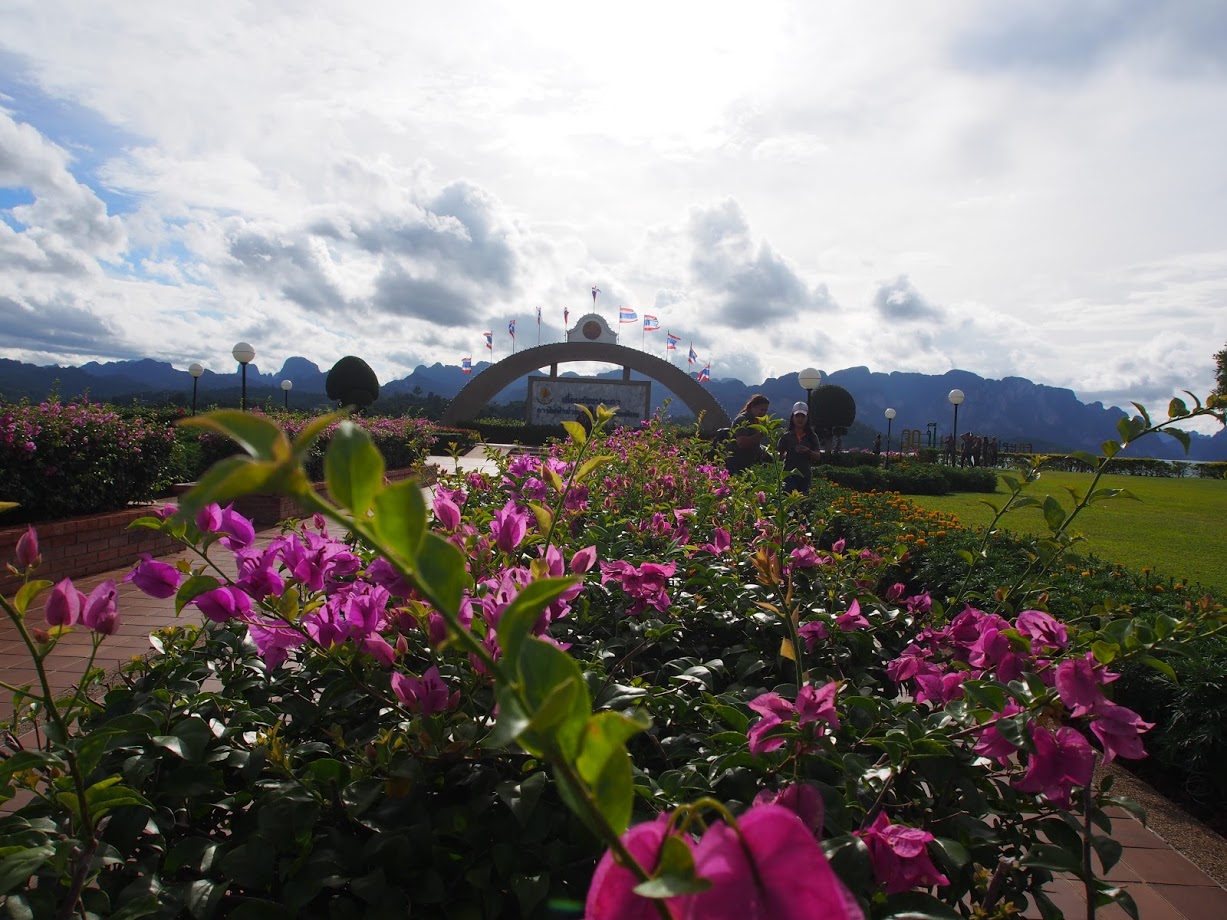
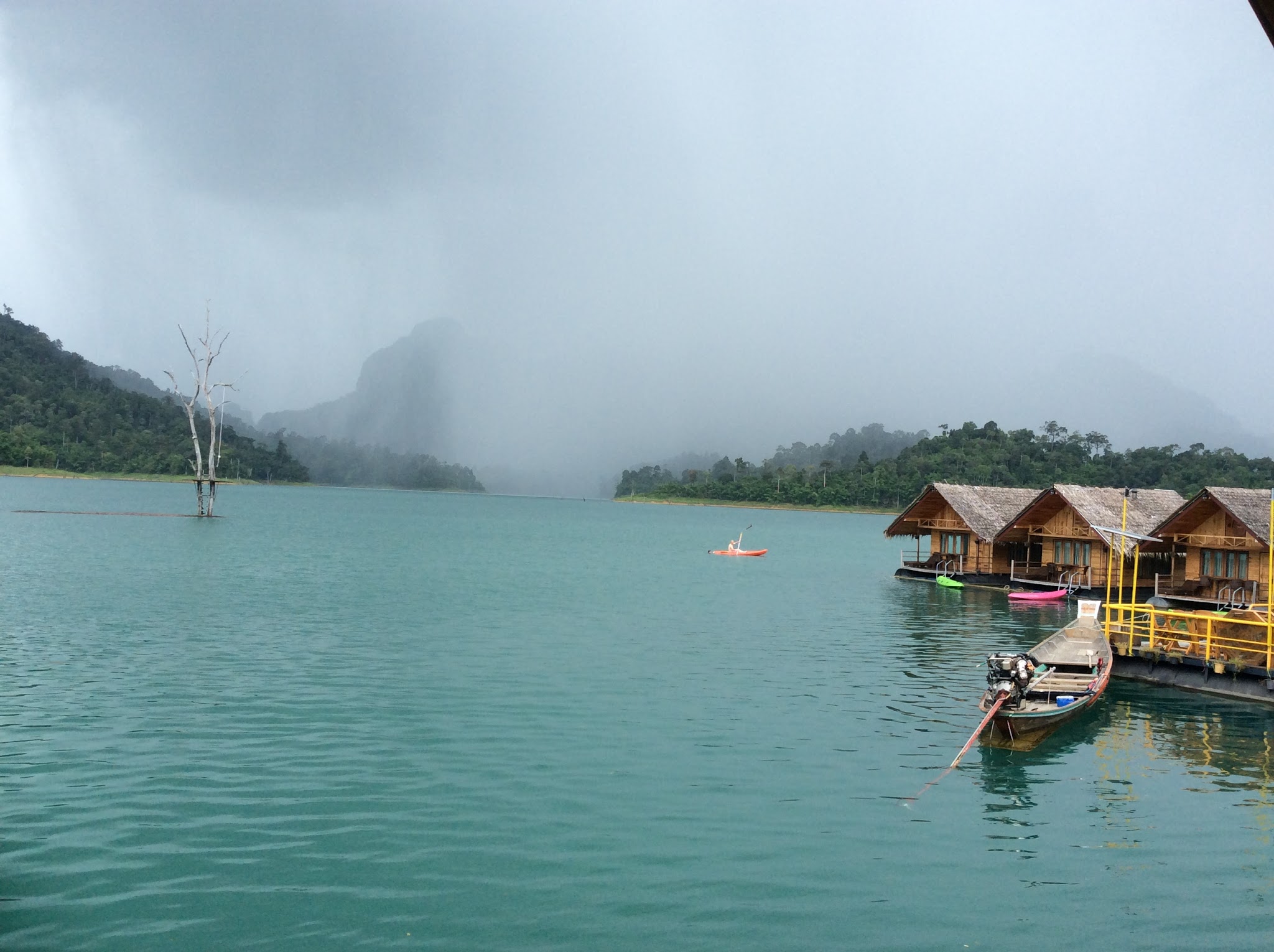
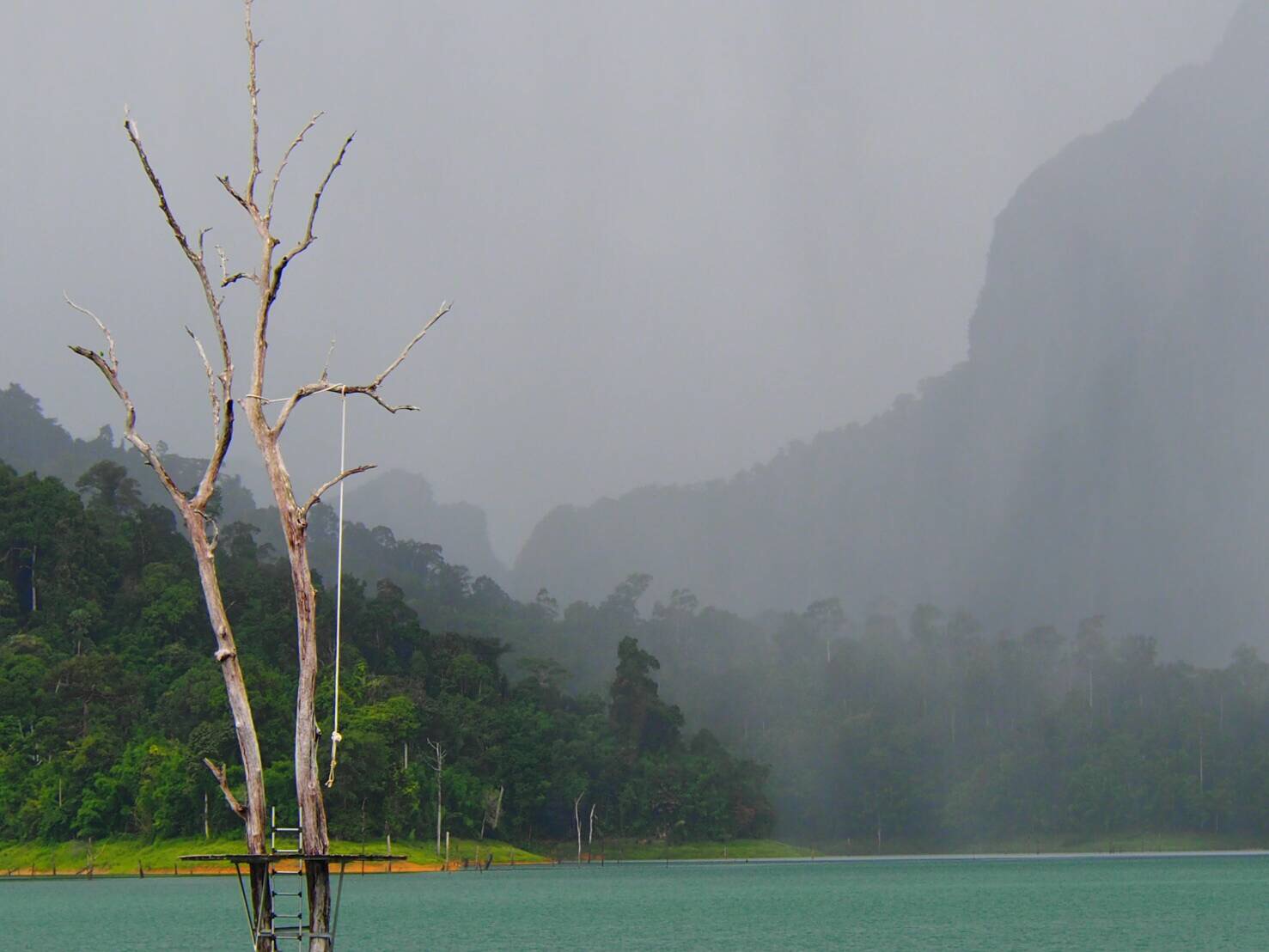
Khao Sok National Park
Khao Sok was established as Thailand's 22nd national park in 1980 by The Royal Forest Department. It covers 739 km² land area of Amphoe Phanom District and Ban Takhun District in Surat Thani province and includes the Cheow Lan Reservoir dammed by the Ratchaprapha Dam.
The park is part of the Khlong Saeng - Khao Sok Forest Complex that incorporates 12 protected sites covering an area of 5,316 km², including some offshore islands in the Andaman Sea. The mountains in the park are along the Phuket Range which extends from Phuket Island further north to Ranong Province.
The main attractions of the park are Cheow Lan Lake, iconic limestone hills, waterfalls, raft houses spread over the lae, trails, caves and rivers.
The rainy season is between late April and early December with most rainfall from May to October, the dry season is January to March. Average temperature ranges from 22°C to 36°C all year around.
Wildlife
Many of Thailand's exciting mammal species can be found in the park; elephant, gaur, sambar deer, sun bear, Asian black bear, Malayan tapir, Crab-eating macaque, gibbon, Indochinese serow, mouse-deer, porcupine, marbled cat, wild boar, Asiatic wild dog.
There are over 400 species of birds reported from the park. Although rare and some sightings are decades old, Storm's stork, Malayan peacock-pheasant, woolly-necked stork, straw-headed bulbul, Gurney's pitta, chestnut-necklaced partridge are all recorded from the park. Other interesting birds found in the park are; wrinkled hornbill, chestnut-backed scimitar babbler, sooty-capped babbler, long-billed partridge, ferruginous partridge, brown barbet, cinnamon-rumped trogon, red-naped trogon.
Helmeted hornbills used to be quite common in the park, but due to poaching, it is now a very rare sighting. With a bit of effort, great argus can be seen at the Khlong Saeng tributary of Khao Sok Lake.
So far, a bit over 70 reptile species reported from the park, there are likely many more. Of the rare reptile species Burmese peacock softshell (Nilssonia formosa), enigmatic leaf turtle (Cyclemys enigmatica), brown wolf snake (Lycodon effraenis), Malayan smooth snake (Liopeltis tricolor), Kopstein's bronzeback (Dendrelaphis kopsteini) are all found in the park. There are three pit viper species found in the park; Sabah pit viper (Trimeresurus sabahi fucatus), Wagler's palm pit viper (Tropidolaemus wagleri) and Malayan pit viper (Calloselasma rhodostoma).
The park is more famous for the symbolic flower of Surat Thani Province, the huge rafflesia flower (Rafflesia kerrii). The flower can be up to 70-80 cm in diameter, blooming only around October to December.
For a long list of species found in the park, please visit ”Wildlife” section of Khao Sok National Park.
Visiting
Before getting to the park, good to know that there are two equally popular areas 67 km apart. One is the area around the headquarters generally referred to as Khao Sok or Khao Sok Village, where it is possible to walk a number of trails, visit waterfalls and join various activities in the river. The other hotspot is Khao Sok Lake east of the headquarters, best known for its raft houses, caves, viewpoints, trails, limestone hills etc.
The best way to get an understanding about the whereabouts of the points of interests in the park is to open the interactive map from this page. The map can be zoomed in/out and panned, it also displays other relevant places all over the country.
Entrance fees & opening times
The entrance fees are 300 Baht for adults and 150 Baht for children. Thai citizens pay 40 Baht for adults and 20 Baht for children. The entrance fee is valid for multiple days only if stayed inside the park, either when camping or staying at raft houses in the lake.
The park is open from 8 am to 6 pm daily and all year round. It is possible to enter the park in the evening with a guide for a night safari.
Hiking
There are plenty of trails around the headquarters area and the lake. Only a couple of these trails can be walked without a guide. Visitors are not recommended to walk longer trails on their own by breaking the national park rules. There is a significant chance to get lost.
Local guides to walk the trails can be arranged from the visitor center or from the agencies and hotels in Khao Sok Village. The guides must be arranged latest a day in advance.
Waterfalls, caves, limestone hills and viewpoints
The accessible waterfalls can only be found along the trails from the headquarters in Khao Sok and at a couple of spots not too far from the main road 401 south of the park. Impressive limestone outcrops can be seen at many spots in the national park; in Khao Sok Village, along the main road and on the lake. Most of the impressive caves are around Khao Sok Lake, reached by longtail boats.
Water activities
If not too strong current, it is possible to swim in a few ponds along the Sok River, either along the main trail west from the headquarters or in Khao Sok Village. If enough water in the river, it is possible to attend canoe or tubing activities, can be arranged from the hotels on arrival. Khao Sok lake is a great place for canoeing and swimming.
Wildlife watching
The park has some of the most exciting mammal species found in Thailand, but it is very rare to see any around the popular touristy areas. Chance to see mammals are bigger along some of the trails in Khao Sok Lake. There are few trails where elephants and gaurs can be seen sometimes.
Around the headquarters long-tail macaques and banded-langurs are common. Sometimes boars or deer may show up on the trails. Magical call of the gibbons may be heard from the hotels near the national park in the morning.
The entire park is a great place to find reptile and amphibian species. Many of Thailand’s exciting lizard, snake and amphibian species can be found along the trails to the waterfalls. Best time to find the reptiles and amphibians is during the evening.
Attractions of Khao Sok
Khao Sok Lake
Also called Cheow Lan Lake or Rajjaprabha Dam Reservoir, it is the best part of the national park where more interesting attractions are located, where wildlife watching possibilities are much better.
There are many raft houses/floating bungalows spread all over the lake, from which it is possible to visit caves, viewpoint, limestone hills and get to some interesting trails. Kayaking among limestone hills in morning mist is a must.
The lake contains over 100 limestone outcrops and has six tributary regions; Klong Long, Klong Ka, Klong Pey, Klong Yee, Khlong Saeng and Khlong Mon. Klong in Thai means river and parts of the lake belongs to Khlong Saeng Wildlife Sanctuary.
Khlong Long
Khlong Long is the most popular tributary within the lake, situated on the northeast side of the lake, approximately 15-16 km from Cheow Lan Lake Pier. The main attractions of this tributary are limestone hills, a cave and a nice viewpoint accessible by a 2.5 hour long hiking through the jungle.
There are five raft houses in Khlong Long;
- Chiew Lan Raft House
- Plern Prai Raft House
- Sai Chon Raft House
- Panvaree Raft House
- Prai Wan
The quality of the raft houses in Khlong Long is much better compared to the others in the lake.
Khlong Ka
Khlong Ka is situated on the south side of the lake, approximately 15 km from Cheow Lan Lake Pier. This tributary has one of the best caves in the park and a great view over a group of limestone hills. There are some great trails between limestone hills to the south. Although the sighting is rare, tapirs have been reported in this area.
Klong Ka and Nang Prai are two rafthouses in this part of the lake.
Khlong Pey
Situated at the southwest end of the lake, approximately 20 km from Cheow Lan Lake Pier. Ton Toey Rafthouse in this tributary was the lake's first ranger station. There is a trailhead few kilometers west from this rafthouse to Nam Talu Cave, the trail is 4 km long and partly circular. Another 6.5 km long trail to the south leads all the way to the main road 401 further south.
Khlong Yee
Situated on the west side of the lake, Khlong Yee is approximately 27 km from Ratchaprapa Dam. Main activities are guided kayak tours, wildlife watching, hiking to Krai Son viewpoint and hiking to a waterfall during the rainy seasons.
Raft houses located in this area are;
- Krai Son Raft House
- Tree Tops Floating Bungalows
- Keeree Warin Raft House
- 500 Rai
- Phuphawaree
Khlong Saeng
Situated on the northwest side of the lake in Khlong Saeng Wildlife Sanctuary, this tributary is approximately 26 km from Ratchaprapa Dam. Klong Saeng River is the largest watershed feeding the lake, it was the widest river in Thailand before the dam was built.
Visitors entering this area must obtain a special permission from Khao Sok National Park headquarters and pay an additional entrance fee for the wildlife sanctuary.
This remote part of the lake is very ideal for hiking and the best place for wildlife watching. It is possible to hike into the wildlife sanctuary with the park rangers to the waterfall, old mines from 60s' and get a chance to see some common animals like gibbons and deer. With some luck even more exciting species like elephant, gaur, mainland serow, great argus and many more can be seen. There are also tapirs, clouded leopards and bear species roaming in the sanctuary.
The only raft house in this tributary area is Klong Saeng Raft House owned by the national park, the qualities of the bungalows are poor.
Khlong Mon
Situated on the north side of the lake, Khlong Mon is approximately 24 km from Cheow Lan Lake Pier. The area consists of high hills and steep valleys, ideal place to spot hornbills, eagles and other wildlife. A nearly 3 km long exciting trail through the jungle will end up in Khlong Saeng tributary further west. There are few other shorter trails at the north side of the tributary.
Tam Gia is the only raft house in this tributary, owned by the national park.









